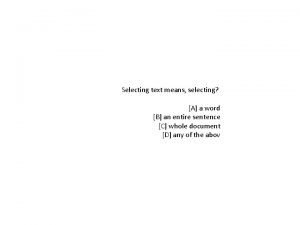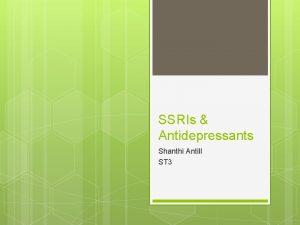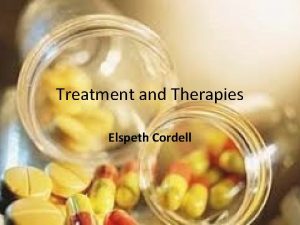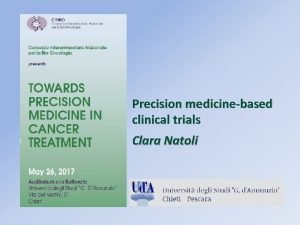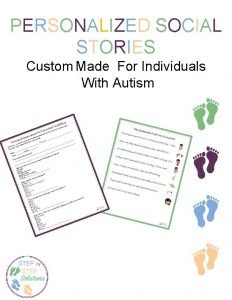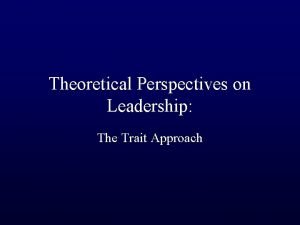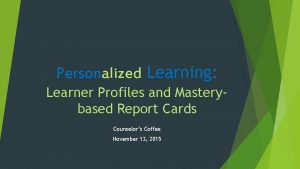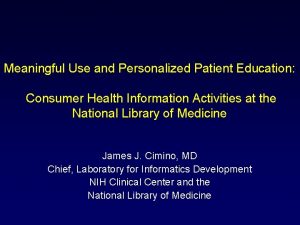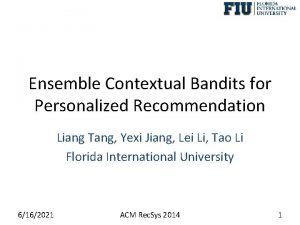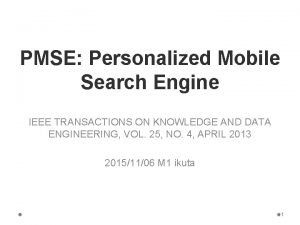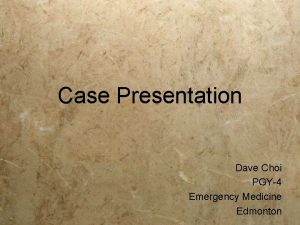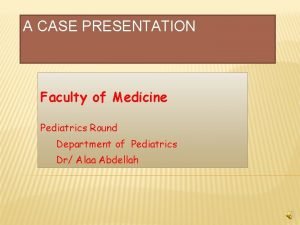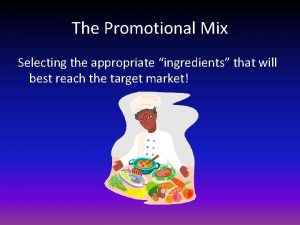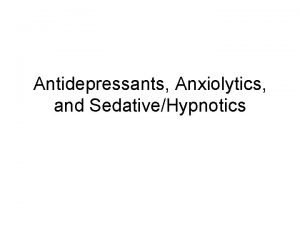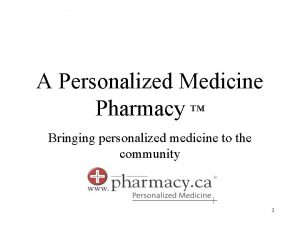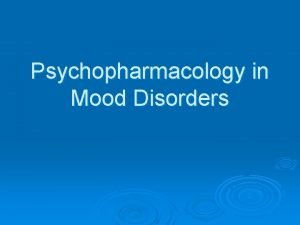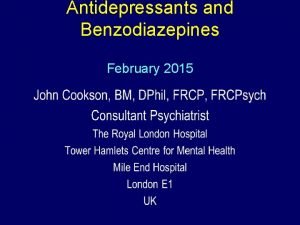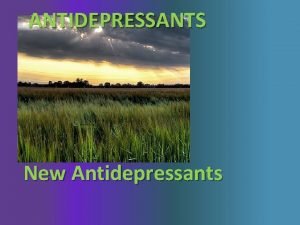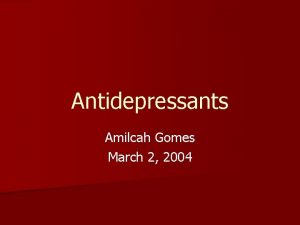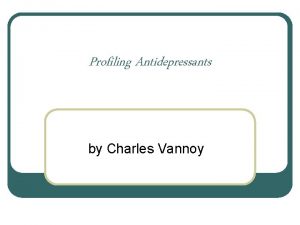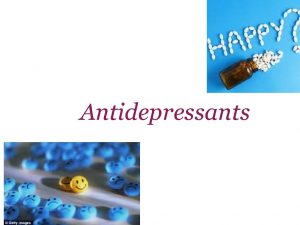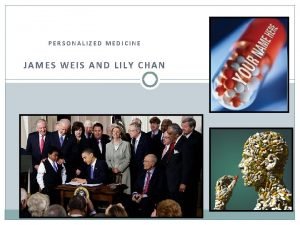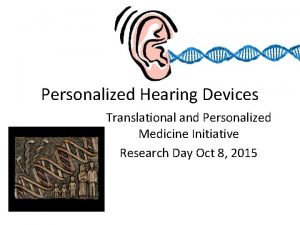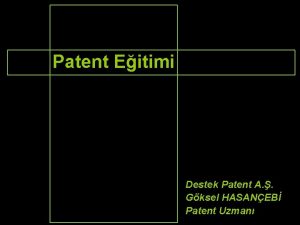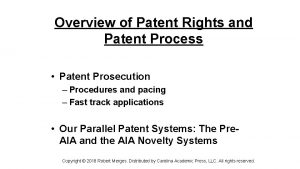Personalized Medicine Selecting AntiDepressants Patent This presentation is


























- Slides: 26

Personalized Medicine Selecting Anti-Depressants

Patent This presentation is based on a patent application on personalized medication held by George Mason University. Scientists and government organizations have free access to this patent

Acknowledgement Farrokh Alemi, Ph. D. Manaf Zargoush Harold Erdman, Ph. D. Igor Griva, Ph. D. Charles H. Evans, Jr. , M. D. , Ph. D. Jee Vang, Ph. D. Manabu Torii, Ph. D. Steven Epstein, M. D.

Case of George Military service Industrial manager, polite, defines himself a “medieval knight. ” First depression episode at 26, treated with clomipramine, dose unknown. At 30 married with a daughter At 45 return of depressive symptoms, treated with fluvoxamine 200– 300 mg and mirtazapine 15 mg Depression continues, loss of interest in work, difficulty with bi-polar daughter Loss of daughter, divorce and loss of work At 48, suicide

Who Benefits from Citalopram? “Highly educated, currently employed, Caucasian women with few complicating psychiatric or medical disorders” All others are out of luck Beyond Efficacy: The STAR*D Trial. By Thomas R. Insel Am J Psychiatry. available in PMC 2006 September 30.

Citalopram Potential for Guided Treatment to Increase Remission

Are Some People Hardwired to Get the Blues? Will they benefit from specific antidpressants? Read more: http: //www. time. com/time/health/article/0, 8599, 1905083, 00. html#ixzz 0 k. WKdxl. NH

Terminology Response to medication ▪ Quick Inventory of Depressive Symptomlogy <=5 Predictors of response ▪ SNP ▪ Allele Most likely predictors ▪ Serotonin transporter gene SLC 6 A 4 ▪ Serotonin transporter polymorphic region 5 HTTLPR

Predicting Response from Genetic Profile Source: http: //www. youtube. com/watch? v=IMe. JA_ino. EM

Success with Genetic Profiling: Hype or Hope

Success with Genetic Profiling: Hype or Hope “… limited clinical utility in matching antidepressants to patient’s genetic profile” Peters EJ, Slager SL, Kraft JB, Jenkins GD, Reinalda MS, Mc. Grath PJ, Hamilton SP. Pharmacokinetic genes do not influence response or tolerance to citalopram in the STAR*D sample. PLo. S One. 2008 Apr 2; 3(4): e 1872.

STAR*D Database 12 month follow up post experimentation Careful baseline and exit data 4300 patients 1933 with genetic data 430, 198 SNP per case 25 likely SNP Garriock HA, Kraft JB, Shyn SI, Peters EJ, Yokoyama JS, Jenkins GD, Reinalda MS, Slager SL, Mc. Grath PJ, Hamilton SP. A genome wide association study of citalopram response in major depressive disorder. Biol Psychiatry. 2010 Jan 15; 67(2): 133 -8.

Patients Like Me Algorithm Test statistical significance of findings among the K most similar cases Nearest defined? ▪ ▪ Euclidian distance (percent of features matched) CART classification Statistical test? ▪ ▪ CUSUM Exponentially weighted cases

Patients Like Me Algorithm Test statistical significance of findings among the K nearest neighbors Nearest defined? ▪ ▪ Euclidian distance (percent of features matched) Severity of illness Statistical test? ▪ ▪ CUSUM Exponentially weighted cases

Analysis for One Case

Predictor B Response to Citalopram 1 0. 9 0. 8 0. 7 0. 6 0. 5 0. 4 0. 3 0. 2 0. 1 0 0 0. 2 0. 4 0. 6 Predictor A 0. 8 1 Hypothetical Data

Predictor B Response to Citalopram 1 0. 9 0. 8 0. 7 0. 6 0. 5 0. 4 0. 3 0. 2 0. 1 0 0 0. 2 0. 4 0. 6 Predictor A 0. 8 1 Hypothetical Data

Response to Citalopram n No ders on p s re No u ts re Hypothetical Data

Start of Classification and Regression Tree

Classification and Regression Tree

A Branch in a Classification and Regression Tree Marker Group

Classification and Regression Tree 25 Fold Cross. Validation Pruning

Classification and Regression Tree Boosted

21 AG AC AA 23 GG, AA CC 13 1 CC AA AG, GG GG AA 15 1 F 75% 16 F 80% 10 67 91% F 7 86% S AG, AA GG AG, AA 1 1 17 100% F GG AG, GG 9 1 SNP_A-2257126 SNP_A-2312802 SNP_A-2007509 SNP_A-1866894 SNP_A-1901209 SNP_A-2170173 SNP_A-1877915 SNP_A-1859624 SNP_A-1809840 SNP_A-1915561 SNP_A-4218787 SNP_A-4291505 SNP_A-4212364 SNP_A-1989783 SNP_A-4300585 SNP_A-4210505 SNP_A-1897143 SNP_A-1838086 SNP_A-1852702 SNP_A-2187089 SNP_A-4198575 SNP_A-4283086 SNP_A-1951600 SNP_A-4223397 SNP_A-2187317 Sample Rules from CART Branches

Overall Percent of Cases Correctly Classified

Conclusion Response to citalopram is predictable A large effect size is observed Combination of genes matter Subgroup of patients have different predictors Clinical Practice Can be Improved
 Selecting text means
Selecting text means Anxiety headache
Anxiety headache Tricyclic antidepressants overdose
Tricyclic antidepressants overdose Antidepressants meds list
Antidepressants meds list Clara natoli
Clara natoli Personalized recommendations
Personalized recommendations Personalized social stories
Personalized social stories Personalized power motive
Personalized power motive Pentaho personalized demo
Pentaho personalized demo Personalized navigation
Personalized navigation Personalized learning learner profile
Personalized learning learner profile Personalized patient education
Personalized patient education First draft personal statement
First draft personal statement Sigir 2018
Sigir 2018 Personalized cybersecurity
Personalized cybersecurity Contextual bandits for personalized recommendation
Contextual bandits for personalized recommendation All-to-all personalized communication
All-to-all personalized communication Personalized mobile search engine ieee paper
Personalized mobile search engine ieee paper Institute for personalized learning
Institute for personalized learning Emergency medicine case presentation
Emergency medicine case presentation Hemophilia transmission
Hemophilia transmission Selecting and managing entry modes
Selecting and managing entry modes Selecting investment in global market
Selecting investment in global market Selecting investment in global market
Selecting investment in global market Selecting the promotional mix
Selecting the promotional mix Chapter 5 selecting a topic and a purpose
Chapter 5 selecting a topic and a purpose What is a circular chart used to show color relationship
What is a circular chart used to show color relationship
